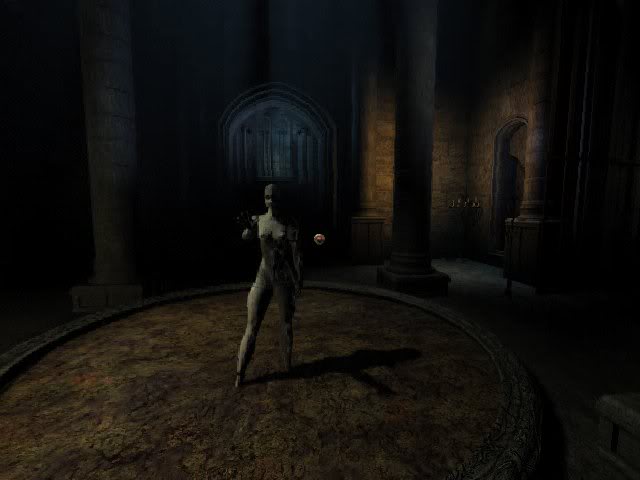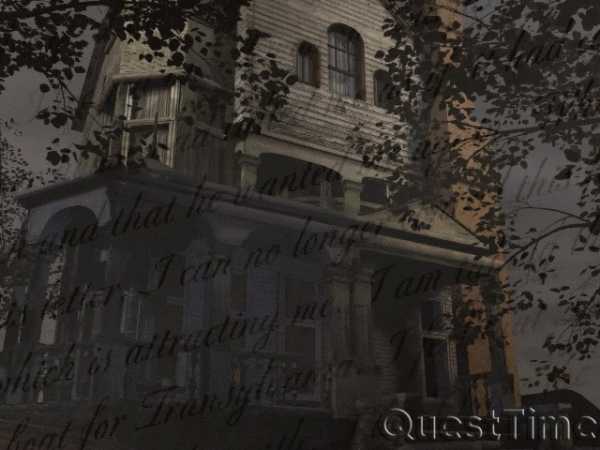

Instead of looming in the darkness, the castle is seen by Jonathan in broad daylight, which evaporates any traces of threat. This wild and foreign landscape surrounding Castle Dracula is replaced in Hammer’s version with a tranquil and commonplace forest. In the novel, Jonathan feels an uneasy sense of entering a foreign territory when his carriage arrives at the Borgo Pass, noticing how the “mountains seem to come nearer to us on each side and to frown down upon us” (Stoker 19). The location of Castle Dracula is originally near the Borgo Pass, a small passageway deep within the colossal Romanian mountains. This erasure of Dracula’s unsettling foreignness in the 1958 adaptation is first apparent in his castle at the very beginning of the film. Under this cloak of a comforting Englishness, Dracula poses dramatically less threat to the integrity of the British Empire.

While, in the novel and early film adaptations, Dracula is portrayed as an exotic foreigner coming from faraway British colonies and threatening to invade the heart of the empire–London–the Count in Hammer’s film is a more ambiguous hybrid, with his disconcerting foreignness highly diluted by familiar English qualities. Van Helsing–it becomes clear that Hammer Studios aspires to revive not only interest in British horror stories but also the pride of the once glorious British Empire. I will propose that, by examining the reworked portrayal of two of the most vital characters in the story–Count Dracula and Dr.

Interestingly, while most critics can agree on the uniqueness of Hammer’s rendition, little attention is paid to the British studio’s treatment of one of the most vital themes of Dracula lore-that is, what Stephen Arata influentially termed “reverse-colonization.” In this study, I will take a closer look at the changes Hammer made to the tale, especially the details concerning colonization and empire expansion, and how these reimaginations complicate Dracula’s legacy. Paying more attention to the conflict between classes, John Potts argues that Hammer’s Dracula is shown to be representative of a “malignant aristocracy,” terrorizing the local lower class and eventually upended by the rise of “middle-class values and practices” (represented by Van Helsing and his vampire hunters). Thinking through the numerous film adaptations of Dracula throughout the twentieth century, Stacey Abbott notices that while the majority of these films (together with the original novel) emphasize the theme of the decaying past (the ancient Count Dracula) invading the modern world (Victorian London), Hammer’s Count Dracula is surprisingly urbane and “modern,” “eschew the threat to the modern world that so defined the novel and subtly underscores the Universal Dracula films” (70). Hammer’s refreshing rendition of Dracula captivated not only public attention but also considerable scholarly interest. Ever since this timely revival, Dracula’s afterlife in films and popular culture has continued to thrive and to this day shows no sign of slowing down.

Hammer’s The Curse of Frankenstein and Dracula, with their reimagined storylines and bold visuals, galvanized a new wave of interest in the British Gothic horror genre and kickstarted the second golden age of British Gothic. Dracula, Frankenstein, and their fellow Victorian monsters might have finally met their ends if it wasn’t for a British film studio, Hammer Film Productions (known more widely as Hammer Studios), which resurrected these creatures of the past and breathed new life into them. It was the atomic age, and the emerging Sci-Fi genre was quickly ushering the archaic British Gothic stories to their graves. To the then-aging Lugosi’s disappointment, the audience was more amused than afraid (Gatiss 54:38-56:35). In 1951, when Bela Lugosi reprised his iconic role on stage as Count Dracula, which had frightened worldwide audiences just two decades earlier, he was sadly met with giggles from theater-goers everywhere the play toured.


 0 kommentar(er)
0 kommentar(er)
